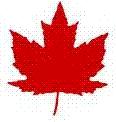

Canada Tax BracketsAs taxpayers in this country, we have a number of Canada Tax Brackets to deal with in determining how much tax we own in a particular year. The federal government and all the provinces have different brackets and rates. The reason we have these brackets is Canada has what is known as a progressive tax system. That in a nutshell means that the more you earn the more you pay. Federally, the lowest rate is 15% on the first $40,726, then 22% on the next $40,726, 26% on the next $44,812, and 29% for income over $126,264 (all 2009 rates and brackets). The provinces all have their own brackets and rates which are listed below, most follow similiar patterns except for Alberta which applied a flat tax (everyone pays the same rate no matter taxable income) and a few have surcharge rates if taxes surpass thresholds. All rates are listed below. The federal brackets, and many of the provinces brackets, are indexed to inflation. Federal brackets are based on a 12 month average federal inflation rates ending September 30 each year. Indexed means that the tax brackets increase as inflation does. They do this so any cost of living wage increases a person may get does not push them into a higher tax bracket, and thus making it a less than cost of living increase (this is an example of bracket creep). Federal 2009 Brackets:
|